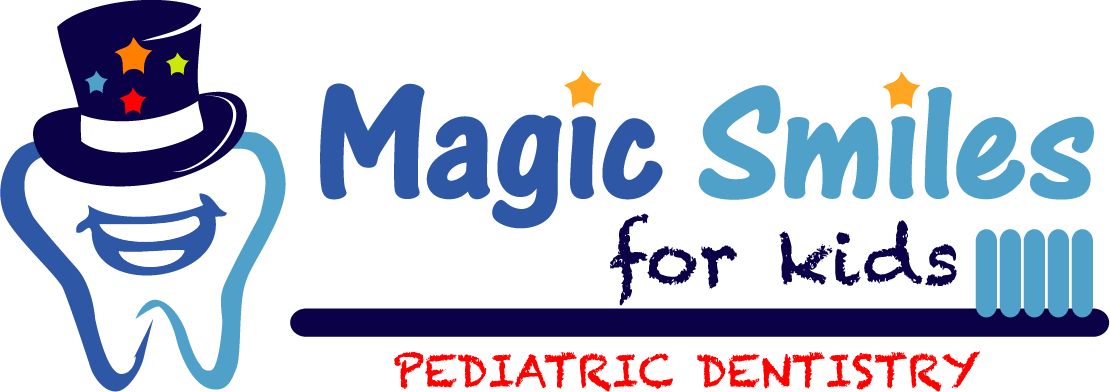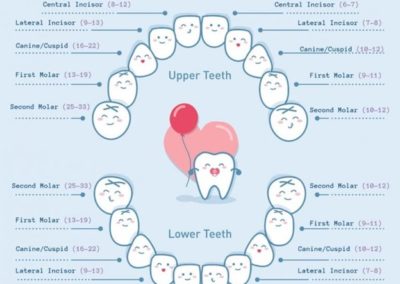Pediatric Dentistry
You Can Trust
Pediatric Dentisry
You Can Trust
Providing Compassionate, Gentle Dental Care
At Magic Smiles for Kids, we equip our patients and families with up-to-date information and updates on our practice. Located in Lindenhurst, NY, and serving the surrounding communities, our compassionate team is always ready to answer any questions! Whether they pertain to kids’ teeth cleaning or our sedation dentistry practices, don’t hesitate to contact us today!
Explore Our Pediatric Dental Services
Schedule an Appointment
Access Patient Information
Frequently Asked Questions
What is a Pediatric Dentist?
When should I take my child to their first dentist appointment?
When will my child begin to get teeth?
Your child’s first tooth will typically erupt between 6 and 12 months, although it is common to occur earlier. Usually, the two bottom front teeth – the central incisors – erupt first, followed by four upper front teeth – called the central and lateral incisors. Your child should have their first full set of teeth by their third birthday.
Most children have 20 primary, or baby teeth. Typically, there are 10 upper teeth and 10 lower teeth. These 20 primary teeth are eventually replaced by 32 permanent teeth, 16 in the upper jaw and 16 in the lower jaw.
The eruption of the permanent molars usually happens between ages 6 and 7. Therefore these teeth are often referred to as the “six-year molars”. These molars erupt behind the baby molars. Many children will have 28 of their permanent teeth by age 13. These teeth include eight incisors, eight premolars, eight molars, and four canines.
The last teeth to develop are the third molars, better known as “wisdom teeth”. These teeth generally begin to erupt between the ages of 17 and 21. Due to these teeth being located so far back in the mouth, they often are not needed for chewing and can be difficult to clean. It may be recommended that these teeth are removed to prevent any issues in the future.
Why are primary teeth so important?
What is the best toothpaste for my child?
It is important to select a toothpaste that contains fluoride, as fluoride helps to prevent dental decay. Remember, children should spit out toothpaste after brushing to avoid getting too much fluoride. If too much fluoride is ingested, a condition known as fluorosis, which affects the permanent teeth, can occur. If your child is too young or unable to spit out toothpaste, use only a smear of toothpaste so that if it is swallowed the amount of fluoride ingested will be minimal.
What is baby bottle decay?
Early symptoms of baby bottle tooth decay are white spots on the surface of teeth or the gum line and tooth sensitivity. More severe symptoms can appear in advanced stages of baby bottle tooth decay and include: brown or black spots on teeth, bleeding or swollen gums, fever, and bad breath. If your child shows any of these symptoms, you need to see your pediatric dentist immediately to prevent further, more complicated problems from occurring.
What if my child fractures or knocks out a tooth?
Chipped or Fractured Permanent Tooth: Call your pediatric dentist immediately. If action is taken quickly, the tooth may be saved, you can help prevent infection and may reduce the need for extensive dental treatment. Rinse the mouth out clean water and apply a cold compresses to help reduce any swelling. If it is possible, save any broken tooth fragments and bring them with you when you visit the dentist.
Why are dental radiographs (x-rays) important?
Dental X-Rays are very safe and the amount of radiation from dental X-Rays is very small. Today’s equipment filters out unnecessary x-rays and restricts the x-ray beam to the area of interest. Dental X-Rays are designed to limit the body’s exposure. Pediatric dentists are incredibly careful to minimize the exposure of their patients to radiation. Dental radiographs represent a far smaller risk than an undetected and untreated dental problem.
Do you offer pediatric sedation?
We use Nitrous oxide, sometimes called “laughing gas,” to help children become more comfortable during certain procedures. Nitrous oxide is a safe and effective sedative agent that is mixed with oxygen and inhaled through a small mask that fits over your nose to help you relax. It is not intended to put them to sleep but instead is designed to help them feel calm and comfortable. The effects of nitrous oxide are temporary and wear off soon after the mask is removed.
For treatments that may last longer or cause more discomfort, we will often recommend a mild oral sedative that your child can take before treatment. Every effort is made to ensure proper dosage and limit mild side effects if any.
Do you use Silver Diamine fluoride?
How do I care for my child’s teeth?
You can clean your infant’s gums – or their first teeth – by simply using a cold, clean washcloth. Simply rinse a clean, soft washcloth with cool water and wring it out. After your child has finished eating or drinking a sugary drink, use the damp washcloth to gently wipe out their mouth. This will remove any sugar or acid that’s left by their food, and help prevent early cavities.
Once your child has a few more baby teeth – usually between 8 and 12 months – then you can graduate from a washcloth to a toothbrush designed for toddlers. There are a lot of toothbrushes designed for babies and toddlers from which to choose. Generally speaking, toothbrushes designed for babies have much softer bristles and a smaller head than those meant for older children.
Use only a smear of toothpaste – about the size of a grain of rice – to brush their teeth. When they’ve gotten older and have more teeth, use a pea-sized amount of toothpaste. Always be sure to rinse their mouth out with cool water after you’re done brushing, and try to keep them from swallowing any toothpaste.
Flossing is also important for baby teeth. Flossing helps remove the plaque and food that can become lodged between teeth. Be sure to floss your child’s teeth daily.
What are dental sealants?
What is Fluoride and why do my children need it?
For more than half a century, the ADA has recommended using toothpaste containing fluoride to prevent cavities. Fluoridated toothpaste does an excellent job of cleaning teeth, but make sure that your child spits all of it out and rinses their mouth thoroughly after brushing since ingesting excessive fluoride can lead to a condition called fluorosis. Fluorosis is faint white lines on the teeth.
What is the best time for orthodontic treatment?
Stage I – Early Treatment: This period of treatment encompasses ages 2 to 6 years. At this young age, we are concerned with underdeveloped dental arches, the premature loss of primary teeth, and harmful habits such
as finger or thumb sucking.
Stage II – Mixed Dentition: This period covers the ages of
6 to 12 years, with the eruption of the permanent incisor (front) teeth and 6 year molars. Treatment concerns deal with jaw malrelationships and dental realignment problems. This is an excellent stage to start treatment, when indicated, as your child’s hard and soft tissues are usually very responsive to orthodontic or orthopedic forces.
Stage III – Adolescent Dentition: This is the most common age for orthodontic treatment. This stage deals with the permanent teeth and the development of the final bite.
Do you have questions we didn’t answer?

Magic Smiles for Kids
826 Buffalo Avenue
Lindenhurst, NY, 11757
Business Hours
Monday-Friday: 9 AM - 6 PM
